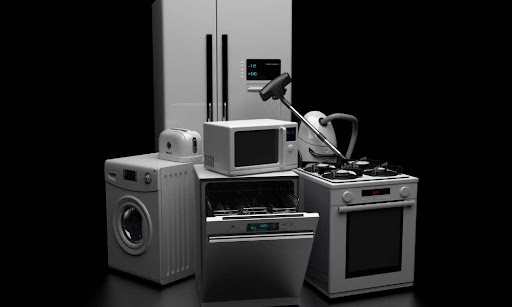
The blackest of the black: In the world of home appliance cleaning, Clean Black Appliances is the new black. The color of an appliance usually doesn’t mean much—except for that one instance where it’s the most effective way to keep your home safe from cooking- fumes and splatters. When it comes to cleaning black appliances, you have a few options: You can try to get away with cleaning them by hand, which is kind of a pain. You can buy special black-cleaning sprays, but they’re way overpriced and have to be used with caution. Or, you could get in the habit of regularly rinsing them with cold, water and a mild detergent like vinegar.
Eventually, though, you’ll probably reach a point where you just can’t stand the sight of black appliances. They’re hard to look at, and they make you kind of queasy.
Fortunately, there are plenty of effective ways to get those built-up oils and grime out of your black appliances without actually having to touch them. If you’ve got an electric range or a dishwasher, this article is for you. It’ll show you how to clean black appliances safely and effectively, from top to bottom, without causing permanent damage or permanently shocking your appliance.
Don’t use Scrubbers for Clean Black Appliances
Cleaning your black appliances by hand usually involves scrubbing the entire surface area with a hard brush, or even your bare hands. It’s super-tiring, time-consuming, and damn near impossible to get all the oil and grime out of your appliances. Plus, there’s the safety issue: What if you don’t notice the oil or other toxins seeping out until it’s too late?
And what if you’re not aware of them until it’s too late? This is precisely the problem with the easy-to-use scrubbers found on most modern rangehoods and refrigerator/freezers. These devices are meant to gently clean the exterior of the appliance, not remove the grease and oil that build up on them. Because of this, you’re actually going to produce more toxins with scrubbing by hand than you would with a rangehood or refrigerator/freezer scrubber.
Always twist before spraying
Cleaning an appliance by swiping the surface with a damp, washcloth-type fabric softener is not only exhausting but will often leave behind build-up of tug-of-war oils on your hands from twisting the softener between your fingers. The oils will also get on your clothes, furniture, and other rambunctious surfaces in your home.
And with every hard scrub, you’re also potentially creating more toxins. Scrubbers are meant to remove excess grease and oil, not add to it.
Don’t spray into corners for Clean Black Appliances
It’s often said that you should always clean an appliance’s surface with the opposite side to the one you plan on using. This is because the oils and bacteria build-up in corners tend to collect in crevices and corners, rather than going down the main surface.
The same goes for garage door openers: We recommend keeping them free of oil and dirt, but Spray-Tinning works best when held against a door.
And don’t worry if you accidentally swiped the wrong side of an appliance during your initial spray — it’ll still clean nicely.
Don’t spray into the air
If you’re worried about the air around your appliances getting contaminated, there’s a solution—don’t breathe in the air. Allyl chloride, a chemical used in aerosol can sprays, is toxic to the environment and human beings. If you’re worried about getting allergens in your home, you could always hire a cleaning company to do a seasonal allergy test.
But allyl chloride is also incredibly harmful to your machines, both indoor and outdoor. It’s a colorless, odorless liquid with a low flash point of around 100 degrees Celsius (212 degrees Fahrenheit).
When it comes in contact with water, it turns into perchlorate, which is a highly volatile, flammable chemical. Perchlorate is known to be very harmful to your health and the environment. Learn more cleaning tips about Clean your Wood Dining Table.
Don’t spray directly on the surface
Cleaning your black appliances with a paint- thinner solution usually results in a build-up of toxic, oily residue. And this is exactly what you don’t want—you don’t want your appliances looking shiny, bright and brand new. You want them looking like they were just cleaned.
Don’t spray into the chamber
Cleaning your black appliances in the dishwasher is one of the best things you can do. The vibrations from the running water and cycle of scrubbing and rinsing will do the rest.
Depending on the design of your dishwasher, it may be possible to spray the interior walls and cabinets without having to empty them all together.
And don’t worry if you accidentally splashed water in your dishwasher while trying to clean. The internal walls are made from BPA-free, food-safe plastic that’s non-reactive to water, so even a little splash won’t do any lasting damage.






